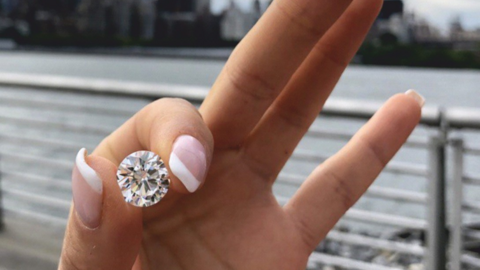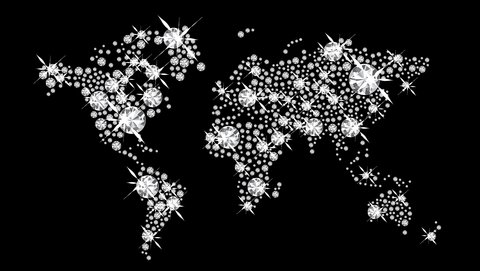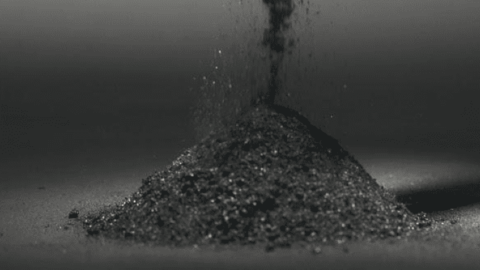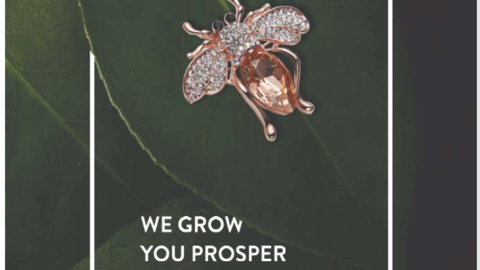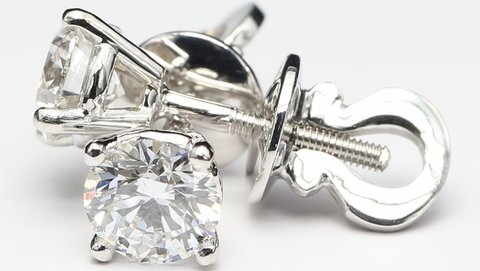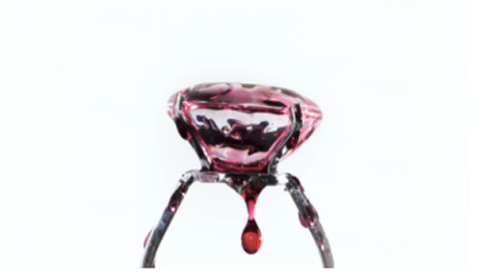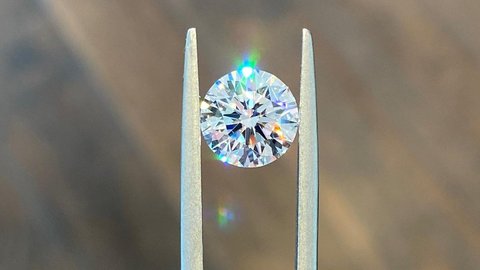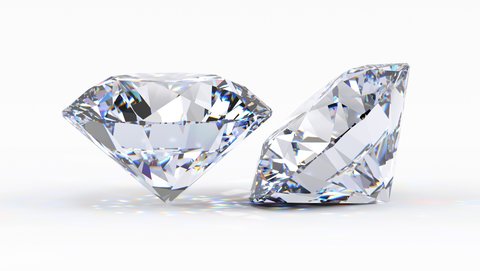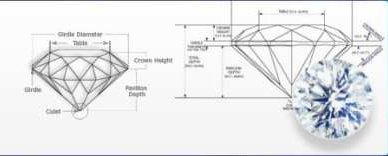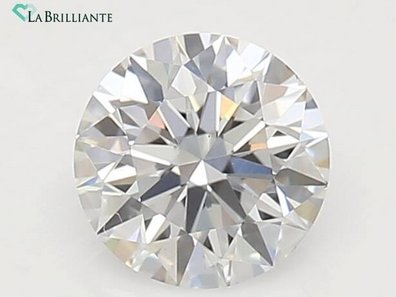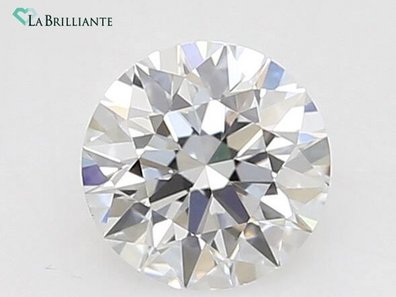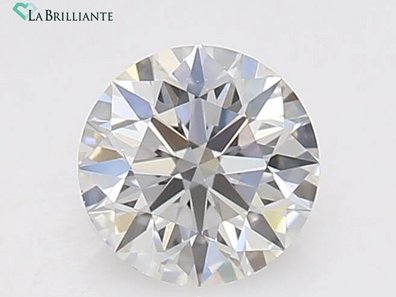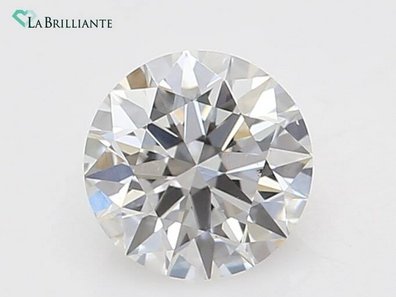Round Cut Lab Grown Diamonds
The round cut of a lab-grown diamond is considered the best by many due to its symmetry and ability to maximize light reflection and refraction. The round shape has 57 or 58 facets, which allows for the greatest number of reflective surfaces, resulting in a diamond that is extremely brilliant and sparkly.
At the lab-grown diamond manufacturer Labrilliante, you can find the perfect round diamond for yourself. We offer overnight or second day delivery.
Explore our Round Cut Diamond Buying Guide.
Need a Particular Lab-Grown Diamond?
Please describe your requirement in the form below and we will contact you within 24 hours with the best available options.
Some of Our Round Lab-Grown Diamonds
Are you a diamond buyer?
Please sign in on our website, and we will grant you access to over 100,000 lab-grown diamonds in our stock.
Round Cut Diamond Proportions
| SIZE | CARAT WEIGHT | SIZE | CARAT WEIGHT | SIZE | CARAT WEIGHT |
| 1.5 mm | 0.015 ct. | 5.5 mm | 0.66 ct. | 9.75 mm | 3.61 ct. |
| 1.75 mm | 0.02 ct. | 5.75 mm | 0.75 ct. | 10 mm | 3.87 ct. |
| 1.8 mm | 0.025 ct. | 6 mm | 0.84 ct. | 10.25 mm | 4.16 ct. |
| 2 mm | 0.03 ct. | 6.25 mm | 0.93 ct. | 10.5 mm | 4.41 ct. |
| 2.2 mm | 0.04 ct. | 6.5 mm | 1.00 ct. | 10.75 mm | 4.57 ct. |
| 2.5 mm | 0.06 ct. | 6.8 mm | 1.25 ct. | 11 mm | 4.91 ct. |
| 2.75 mm | 0.08 ct. | 7 mm | 1.30 ct. | 11.25 mm | 5.49 ct. |
| 3 mm | 0.10 ct. | 7.3 mm | 1.50 ct. | 11.5 mm | 5.85 ct. |
| 3.25 mm | 0.14 ct. | 7.5 mm | 1.67 ct. | 12 mm | 6.84 ct. |
| 3.5 mm | 0.17 ct. | 7.75 mm | 1.75 ct. | 12.25 mm | 7.26 ct. |
| 3.75 mm | 0.21 ct. | 8 mm | 2.00 ct. | 12.5 mm | 7.36 ct. |
| 4 mm | 0.25 ct. | 8.25 mm | 2.11 ct. | 12.75 mm | 7.52 ct. |
| 4.25 mm | 0.28 ct. | 8.5 mm | 2.43 ct. | 13 mm | 8.51 ct. |
| 4.5 mm | 0.36 ct. | 8.7 mm | 2.50 ct. | 13.5 mm | 9.53 ct. |
| 4.75 mm | 0.44 ct. | 9 mm | 2.75 ct. | 14 mm | 10.49 ct. |
| 5 mm | 0.50 ct. | 9.1 mm | 3.00 ct. | 15 mm | 12.89 ct. |
| 5.25 mm | 0.56 ct. | 9.5 mm | 3.35 ct. | 16 mm | 16.06 ct. |
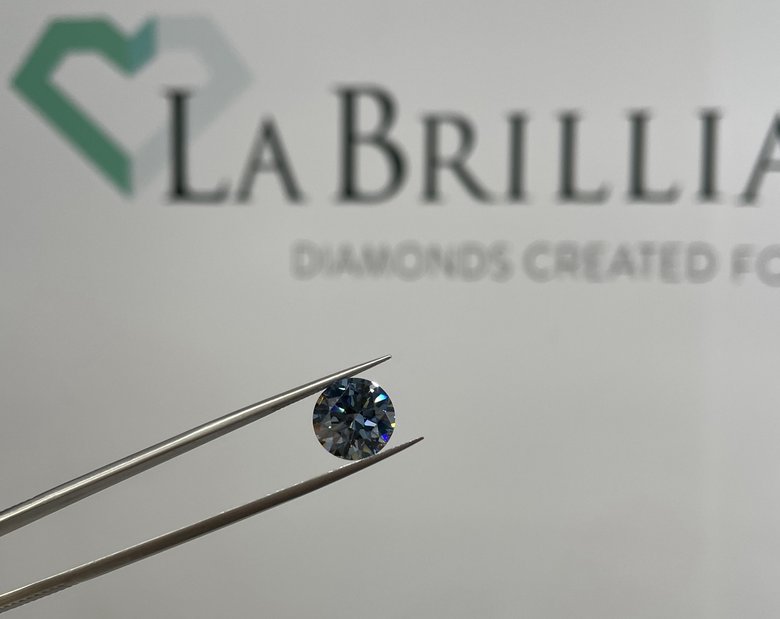
What Should You Know When Choosing a Round Lab-Grown Diamond?
When it comes to round gemstones, the most important thing is how they are cut. It's a good idea to pick a diamond with an excellent cut because lower grades might not sparkle as nicely due to uneven proportions. Diamonds with an excellent cut can seem larger and more beautiful because they shine brightly.
Some diamond cutters intentionally make the middle part of the diamond, called the girdle, thicker to make the lab diamond weigh more. However, this doesn't make the diamond look bigger. Checking the girdle's thickness is a smart move when choosing a diamond. Otherwise, you might pay extra for a heavier diamond that doesn't really look any different. Still, you shouldn't choose a lab-grown diamond with a "very thin" girdle either, as it can make the edges too delicate and prone to damage.
Lab-grown diamonds in the same color group (like colorless or near colorless) won't look very different, but the price difference can be significant. It's a good idea to go for a near colorless diamond, preferably not lower than grade I. Such a diamond won't have a noticeable yellowish tint and will be more affordable than a completely colorless one.
The History of Round Cut Diamonds
Additionally, the round shape is the most versatile and can be set in a variety of different jewelry styles, making it suitable for any occasion. The round shape is also the most popular lab-created diamond shape, and has been for several decades, which means that it holds its value well and is more likely to be resold in the future.
The origins of the round diamond shape can be traced back to the late 19th and early 20th centuries, as a result of advancements in cutting and polishing methods. Prior to this, diamonds were typically cut into more primitive shapes, such as the "old mine" or "old European" cuts. These early diamond cuts had a smaller table, higher crown, and a deeper pavilion than modern round diamonds, resulting in a less brilliant stone.
In 1919, Marcel Tolkowsky, a Belgian diamond cutter, published a treatise on the ideal proportions for a round diamond, which is known as the Tolkowsky Cut or the American Ideal Cut. Tolkowsky's calculations were based on mathematical principles of light reflection and refraction, and his ideal cut maximized the diamond's brilliance and fire. This cut became the standard for round lab-created diamonds too and is still used today as a benchmark for diamond cutting and grading.
The round diamond shape quickly gained popularity in the 1920s and 1930s, and has remained the most popular diamond shape to this day. The round shape became more popular because of its symmetry, which allowed for the maximum reflection of light, creating a sparkling and brilliant stone.
So, the round shape of diamond came from the process of cutting and polishing, the Tolkowsky Cut is considered as the standard for round lab-grown diamonds, and its popularity is due to its symmetry which maximize the reflection of light and creates a sparkling and brilliant diamond.
How to Buy Round Lab Diamonds Wholesale?
Labrilliante ensures a smooth process for buying wholesale lab-grown diamonds. Choose between completing an online application or reaching out to us via the provided phone number for convenience. Our team is on standby to help you choose the perfect lab-grown diamond that aligns with your preferences and needs.
FAQ: Round Lab Grown Diamonds
Round cut lab-grown diamonds are considered the best by many due to their perfect symmetry and 57-58 facets that maximize light reflection and refraction. This structure creates exceptional brilliance and sparkle that other cuts cannot match. The round shape also offers versatility for various jewelry settings and has maintained its popularity for decades.
The Tolkowsky Cut, also known as the American Ideal Cut, was developed in 1919 by Belgian diamond cutter Marcel Tolkowsky. Based on mathematical principles of light reflection and refraction, this cut established the ideal proportions for round diamonds to maximize brilliance and fire. It remains the benchmark for diamond cutting and grading today, including for lab-grown diamonds.
The cut quality is crucial for round diamonds. An excellent cut creates optimal light performance, making the diamond appear larger and more brilliant despite potentially weighing less. Lower cut grades often result in uneven proportions and reduced sparkle. Always prioritize cut quality over slight differences in color or carat weight for maximum visual impact.
Some diamond cutters intentionally create thicker girdles (the middle section of the diamond) to increase weight without enhancing appearance. This practice can make you pay more for a heavier diamond that doesn't look any different. However, avoid "very thin" girdles as well, as they make diamonds more susceptible to damage. Check girdle thickness specifications before purchasing.
Lab-grown diamonds within the same color group (colorless or near colorless) have minimal visible differences, yet significant price variations. For the best value, consider near colorless diamonds (preferably not lower than grade I) which lack noticeable yellow tints while being more affordable than completely colorless options.
Round lab-grown diamonds tend to hold their value better than other shapes because they've been the most popular diamond shape for several decades. Their timeless appeal, versatility in different jewelry styles, and consistent demand make them more likely to be resold in the future compared to trendier cuts.
Labrilliante offers two convenient methods to purchase wholesale lab-grown diamonds: complete an online application on their website or contact them directly via phone. Their team will assist you in selecting the perfect diamond based on your preferences. They offer overnight or second-day delivery and provide access to over 100,000 lab-grown diamonds in their inventory once you sign in to their website.
A 1-carat round lab-grown diamond is approximately 6.5mm in diameter. As the diameter increases, the carat weight increases exponentially-not linearly. For example, a 7.5mm diamond weighs about 1.67 carats, while a 10mm diamond weighs approximately 3.87 carats. This relationship is important to understand when selecting a diamond based on desired size.


